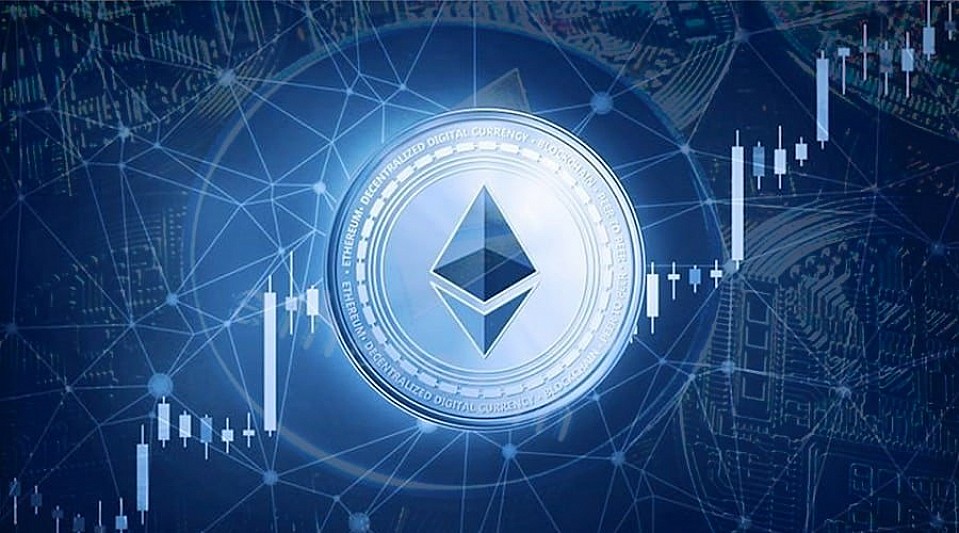Layer-2 Networks Could Be Ethereum’s Ticket to a Major Price Rally
25.10.2024 16:00 2 min. read Alexander Stefanov
The conversation surrounding the effect of Ethereum's layer-2 networks on the revenue generated by the Ethereum mainnet has been ongoing, with Sygnum Bank weighing in on the matter.
According to Katalin Tischhauser, the bank’s head of research, it remains premature to determine whether these layer-2 solutions will negatively impact mainnet revenue or impede its price growth.
Tischhauser acknowledged that layer-2 networks might naturally divert some activity away from the mainnet. However, she emphasized that the scalability these solutions offer could facilitate new transaction types and open up previously untapped revenue streams for Ethereum. She stated,
It’s too early to conclude if layer-2 networks will diminish mainnet revenue or contribute to its growth. While it’s likely that the mainnet will lose some revenue share to layer-2s, these innovations could allow the Ethereum mainnet to earn income in ways that were not previously feasible.
Additionally, Tischhauser pointed out that the decline in revenue has affected market sentiment regarding Ethereum, which is reflected in its underwhelming performance compared to Bitcoin.
On a similar note, Henrik Andersson, the Chief Investment Officer at Apollo Capital, shared his insights on the influence of layer-2 networks on Ethereum’s standing. He argued that these networks play a vital role in preserving Ethereum’s dominance among layer-1 blockchains by discouraging users from switching to other platforms.
Andersson believes that Ethereum’s layer-2 networks are set to fuel long-term revenue growth by increasing transaction volumes and attracting institutional investors, which could help Ethereum reclaim its market share. He recently forecasted that the price disparity between Ethereum and Bitcoin could diminish, suggesting that ETH might reach a new all-time high by early 2025 or shortly thereafter.
-
1
Arthur Hayes Says Crypto’s Boldest Trader May Be Waiting the Next Airdrop
03.06.2025 16:00 1 min. read -
2
Ethereum Price Prediction: Is ETH Heading to $4,000? This Pattern Says ‘Yes’
10.06.2025 22:50 3 min. read -
3
XRP Network Activity Soars as ETF Speculation Gains Steam
11.06.2025 18:00 2 min. read -
4
sXRP ETF Hype Builds as 2025 Bets Surge on Polymarket
04.06.2025 10:00 1 min. read -
5
Ethereum Faces Uphill Battle Despite Optimism from Analysts
04.06.2025 21:00 1 min. read
Cardano Leads Developer Activity, Ethereum Maintains Ecosystem Dominance
Development trends across major blockchain networks show Cardano pulling ahead in core contributions, while Ethereum continues to dominate the broader ecosystem despite a drop in participation.
Crypto Funds Pull in $1.2B Despite Market Drop and Global Tensions
Global crypto funds just logged a tenth straight week of fresh capital, pulling in another $1.24 billion even as prices slid and geopolitics turned tense.
Kraken’s Ink Chain Ramps Up Usage as Token Launch Approaches
Ink, the Layer-2 network incubated by Kraken and built on Optimism’s Superchain framework, is suddenly buzzing with on-chain activity.
After a Bleak Week for Crypto, Eyes Turn to This Week’s Token Unlocks
Middle-East tensions pushed Bitcoin under $100k and drove Ethereum to its lowest levels since May, but the next potential volatility spark is already on the calendar: a cluster of token releases worth nearly $140 million will hit the market between 24–28 June.
-
1
Arthur Hayes Says Crypto’s Boldest Trader May Be Waiting the Next Airdrop
03.06.2025 16:00 1 min. read -
2
Ethereum Price Prediction: Is ETH Heading to $4,000? This Pattern Says ‘Yes’
10.06.2025 22:50 3 min. read -
3
XRP Network Activity Soars as ETF Speculation Gains Steam
11.06.2025 18:00 2 min. read -
4
sXRP ETF Hype Builds as 2025 Bets Surge on Polymarket
04.06.2025 10:00 1 min. read -
5
Ethereum Faces Uphill Battle Despite Optimism from Analysts
04.06.2025 21:00 1 min. read


